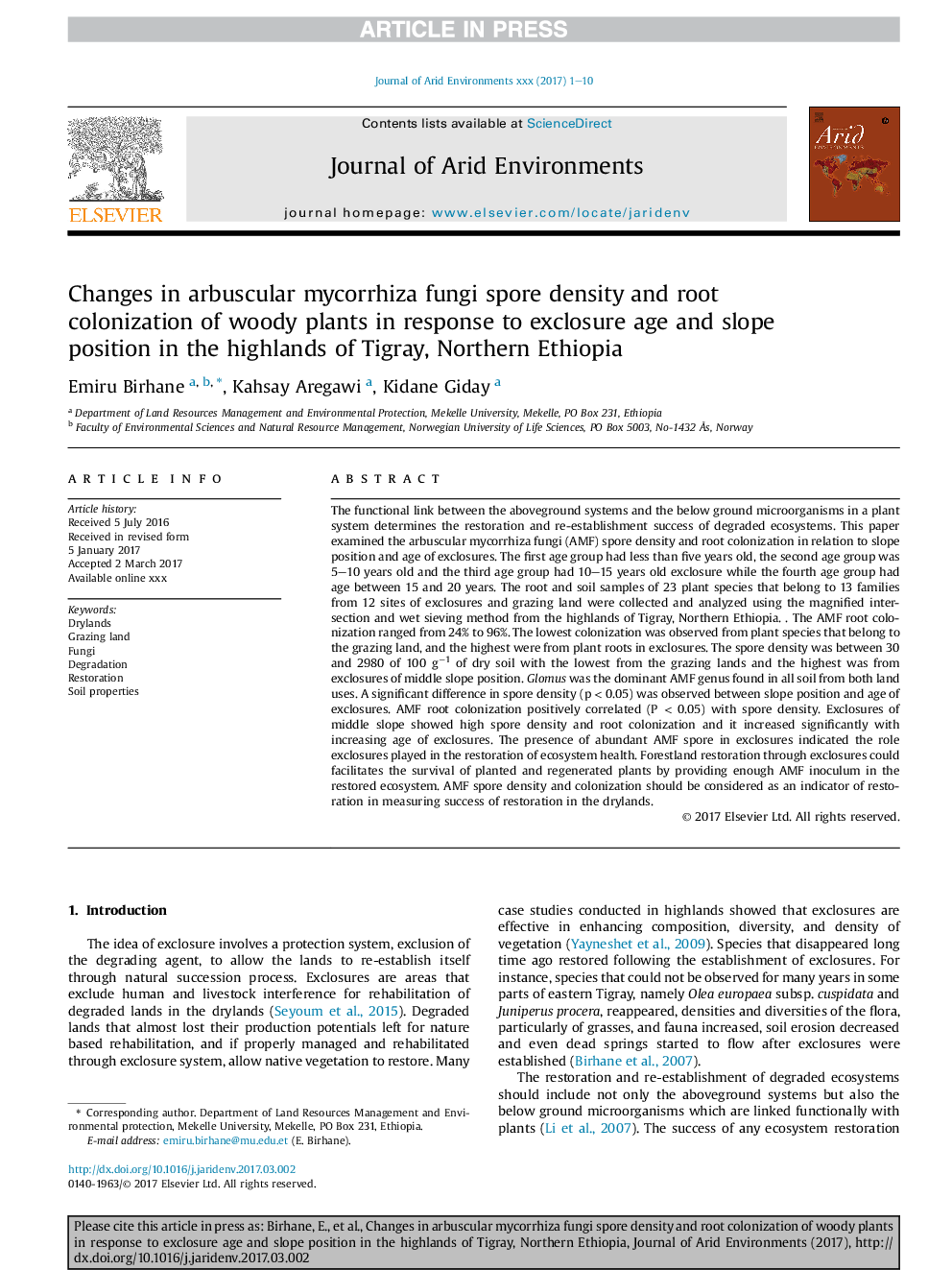| کد مقاله | کد نشریه | سال انتشار | مقاله انگلیسی | نسخه تمام متن |
|---|---|---|---|---|
| 5744299 | 1618217 | 2017 | 10 صفحه PDF | دانلود رایگان |
عنوان انگلیسی مقاله ISI
Changes in arbuscular mycorrhiza fungi spore density and root colonization of woody plants in response to exclosure age and slope position in the highlands of Tigray, Northern Ethiopia
ترجمه فارسی عنوان
تغییرات تراکم اسپور قارچ میکوریزه آربوسکولار و کلونیزاسیون ریشه گیاهان چوبی در پاسخ به سن و موقعیت شیب در مناطق مرتفع تیگیر، شمال اتیوپی
دانلود مقاله + سفارش ترجمه
دانلود مقاله ISI انگلیسی
رایگان برای ایرانیان
کلمات کلیدی
خشکبار گاو زمین، قارچ، تنزل، ترمیم، خواص خاک،
موضوعات مرتبط
مهندسی و علوم پایه
علوم زمین و سیارات
فرآیندهای سطح زمین
چکیده انگلیسی
The functional link between the aboveground systems and the below ground microorganisms in a plant system determines the restoration and re-establishment success of degraded ecosystems. This paper examined the arbuscular mycorrhiza fungi (AMF) spore density and root colonization in relation to slope position and age of exclosures. The first age group had less than five years old, the second age group was 5-10 years old and the third age group had 10-15 years old exclosure while the fourth age group had age between 15 and 20 years. The root and soil samples of 23 plant species that belong to 13 families from 12 sites of exclosures and grazing land were collected and analyzed using the magnified intersection and wet sieving method from the highlands of Tigray, Northern Ethiopia. . The AMF root colonization ranged from 24% to 96%. The lowest colonization was observed from plant species that belong to the grazing land, and the highest were from plant roots in exclosures. The spore density was between 30 and 2980 of 100 gâ1 of dry soil with the lowest from the grazing lands and the highest was from exclosures of middle slope position. Glomus was the dominant AMF genus found in all soil from both land uses. A significant difference in spore density (p < 0.05) was observed between slope position and age of exclosures. AMF root colonization positively correlated (P < 0.05) with spore density. Exclosures of middle slope showed high spore density and root colonization and it increased significantly with increasing age of exclosures. The presence of abundant AMF spore in exclosures indicated the role exclosures played in the restoration of ecosystem health. Forestland restoration through exclosures could facilitates the survival of planted and regenerated plants by providing enough AMF inoculum in the restored ecosystem. AMF spore density and colonization should be considered as an indicator of restoration in measuring success of restoration in the drylands.
ناشر
Database: Elsevier - ScienceDirect (ساینس دایرکت)
Journal: Journal of Arid Environments - Volume 142, July 2017, Pages 1-10
Journal: Journal of Arid Environments - Volume 142, July 2017, Pages 1-10
نویسندگان
Emiru Birhane, Kahsay Aregawi, Kidane Giday,
